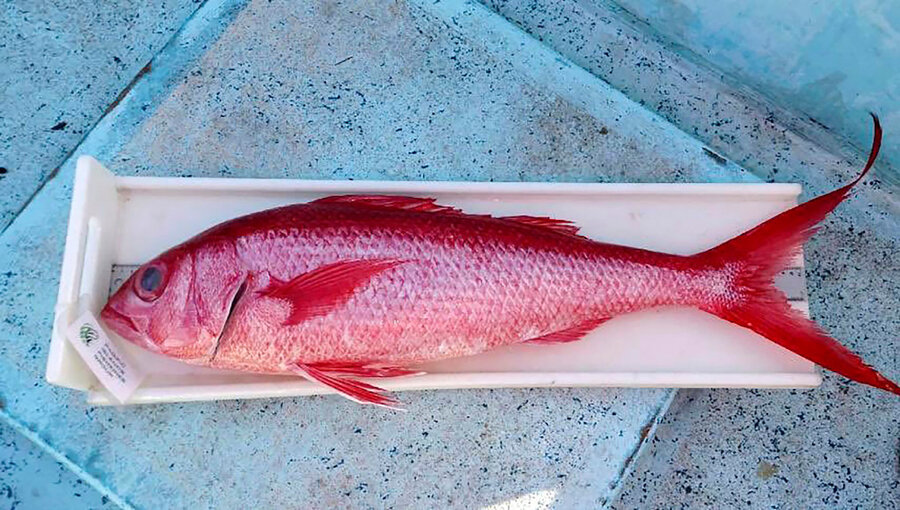Hawaii fishermen, scientists cooperate on sustainability research
Loading...
The National Oceanic and Atmospheric Administration (NOAA) announced Tuesday that it will be collaborating with fisherman in Hawaii to research the health and size of several native fish species's populations.
The research will focus on seven species of Hawaii's deep-water bottom-dwelling fish, which include six species of snapper and one species of grouper. These big red fish, particularly the Onaga and the Opakapaka, are commonly eaten across Hawaii, and the data from this study will inform sustainable fishing practices that, hopefully, will allow these fish to remain in the cultural diet for years to come.
"Our current stock assessment shows that [the Hawaii deep seven] are not over fished and they are not experiencing over fishing," Benjamin Richard, a NOAA marine biologist who is leading the research, tells The Christian Science Monitor. "Part of our role is to collect the best scientific information so that we can help to ensure that that continues."
All commercial fisheries are required to record how many fish they catch and sell. The data is used by the state, and agencies such as NOAA’s Pacific Islands Regional Office and the Western Pacific Regional Fishery Management Council, to inform the annual catch limit. But this study aims to improve upon those methods.
"We are starting this study to augment that data stream to get, what we call, a fisheries independent abundance estimate ... to provide those agencies with the best scientific information possible so that they can make the best decisions to help ensure sustainable fisheries," Dr. Richards tells the Monitor.
This study will combine data from NOAA scientists and six commercial fishermen – who have been trained in a standardized fishing methods for the sake of this research – to achieve an accurate fish count. The fishermen are already out at sea, and the scientists will join them later this month with deep sea cameras, which will sink to the bottom of the ocean to record the fish in the area.
Together the fishermen and NOAA scientists will be surveying the waters across all the main eight Hawaiian islands, from Niihau to the Big Island, according to Richards. The team will combine and analyze the data early next year, and their findings will inform the 2018 stock assessment.
The collaborative nature of the research is particularly notable considering that fishermen have felt left out of conservation policies in the past.
When Obama expanded Papahānaumokuākea marine sanctuary off the shores of Hawaii to protect 582,000 square miles of ocean in August, many local fishermen and members of the Hawaiian government were not thrilled.
The newly protected area was previously used for big fish such as tuna, and commercial longline fishing practices were already under strict government regulation. Many fishermen felt that more restricted waters would only make it more difficult for them to find waters to fish in.
"Excluding American citizens from American waters and forcing in this case fishermen onto the high seas to do their business – something just doesn't quite sit right," Sean Martin, the president of the Hawaii Longline Association, told Reuters in August.
Richards says the model his team is using could certainly be applied to other fisheries around the world, but that respecting local cultural fishing practices and relationships is key to any kind of collaborative research.
"Our goal in this project is to involve the local fishermen as much as possible," Richards tells the Monitor. "We are really all in this together to ensure sustainable fisheries. It is important for the fishermen to have sustainable fisheries for their children and grandchildren, and it is important for us to be able to enjoy those fish in restaurants and home tables for generations."
This report includes material from the Associated Press.








